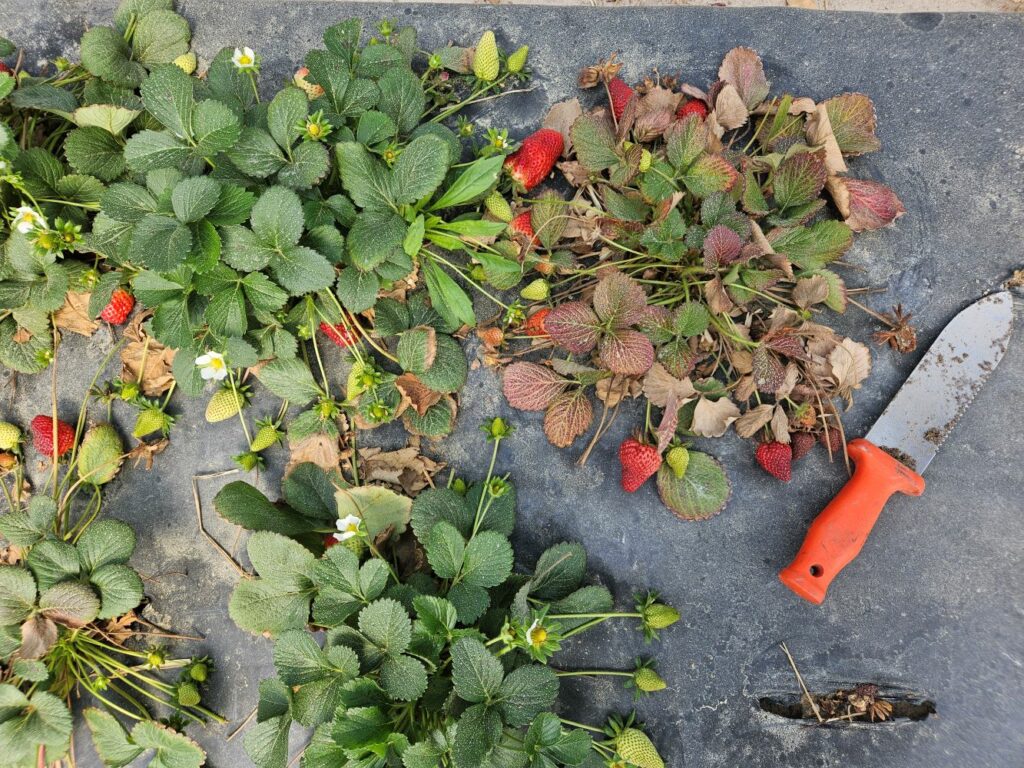Best Management Practices for Neopestalotiopsis
go.ncsu.edu/readext?1024429
en Español / em Português
El inglés es el idioma de control de esta página. En la medida en que haya algún conflicto entre la traducción al inglés y la traducción, el inglés prevalece.
Al hacer clic en el enlace de traducción se activa un servicio de traducción gratuito para convertir la página al español. Al igual que con cualquier traducción por Internet, la conversión no es sensible al contexto y puede que no traduzca el texto en su significado original. NC State Extension no garantiza la exactitud del texto traducido. Por favor, tenga en cuenta que algunas aplicaciones y/o servicios pueden no funcionar como se espera cuando se traducen.
Português
Inglês é o idioma de controle desta página. Na medida que haja algum conflito entre o texto original em Inglês e a tradução, o Inglês prevalece.
Ao clicar no link de tradução, um serviço gratuito de tradução será ativado para converter a página para o Português. Como em qualquer tradução pela internet, a conversão não é sensivel ao contexto e pode não ocorrer a tradução para o significado orginal. O serviço de Extensão da Carolina do Norte (NC State Extension) não garante a exatidão do texto traduzido. Por favor, observe que algumas funções ou serviços podem não funcionar como esperado após a tradução.
English
English is the controlling language of this page. To the extent there is any conflict between the English text and the translation, English controls.
Clicking on the translation link activates a free translation service to convert the page to Spanish. As with any Internet translation, the conversion is not context-sensitive and may not translate the text to its original meaning. NC State Extension does not guarantee the accuracy of the translated text. Please note that some applications and/or services may not function as expected when translated.
Collapse ▲
Healthy plants (top) compared to infected (bottom) showing wilting, reddening of old leaves and stunting of new growth caused by Neopestalotiopsis crown infection
Best Management Practices for Neopestalotiopsis crown, leaf and fruit disease on strawberry – for more information on this disease, see the linked articles below — Bill Cline, NC State
- Pre-plant — Bottom plow and disc harrow to bury old strawberry crowns and debris.
- Pre-plant — Rotate fields for two years when possible.
- Pre-plant — Fumigate beds prior to planting.
- At planting — Bring in disease-free transplants.
- At planting — Cull plants — do not plant unhealthy plants and destroy those not planted.
- Fall — Apply efficacious fungicides after planting every 7-14 days until cold weather.
- Year-round — Limit field operations, such as harvesting and spraying, when plants are wet.
- Year-round — Sanitize hands, shoes, and clothing when moving out of infected fields.
- Year-round — Clean and disinfect equipment when moving out of infected fields.
- Year-round — Remove and destroy symptomatic plants to reduce the spread of disease.
- Spring – Apply efficacious fungicides in rotation with routine sprays for other diseases.
- Spring — Use good sanitation practices — avoid overhead watering, cull & destroy infected fruit.
Suggested Spray Program (Fall): When applied as directed for control of labeled diseases, these fungicides have shown efficacy against Neopestalotiopsis and can be used in rotation as shown below. Apply immediately after planting and continue as new leaves emerge, on a 7-to-14-day schedule. Use longer intervals between sprays under dry conditions, and shorter intervals in wet conditions when disease pressure is high. Good coverage is critical, use adequate pressure (>80 PSI) and 80-100 gallons of spray solution per acre. A good article on building a sprayer is linked below.
Spray # 1 – Thiram SC at 2 to 2.5 qts per acre
Spray # 2 – Tilt, Rhyme or Inspire at labeled rates
Spray # 3 – Thiram SC at 2 to 2.5 qts per acre
Spray # 4 – Tilt, Rhyme or Inspire at labeled rates
Spray # 5 – Thiram SC at 2 to 2.5 qts per acre
Repeat as necessary, within label limitations — see comments below.
The fungicide Switch (cyprodinil + fludioxonil) is also an option; however, Switch is more useful in spring for protection of leaves, flowers and fruit, and in most cases should be reserved for spring use.
Thiram is limited to 12 applications per year east of the Mississippi River, 5 applications west.
Tilt, Rhyme and Inspire are all FRAC 3 fungicides and are collectively limited to 4 applications per year.
Tilt (propiconazole) has a mild growth regulator effect (greening, shortened runners and petioles) when used continuously on strawberry. Rotate products and do not use Tilt for more than three applications.
Sources:
Neopestalotiopsis Leaf, Fruit, and Crown Rot of Strawberry
UPDATE: Neopestalotiopsis (Neo-P)
Dramatic Neopestalotiopsis Disease in Strawberry Tips and Plug Plant Production Nurseries


